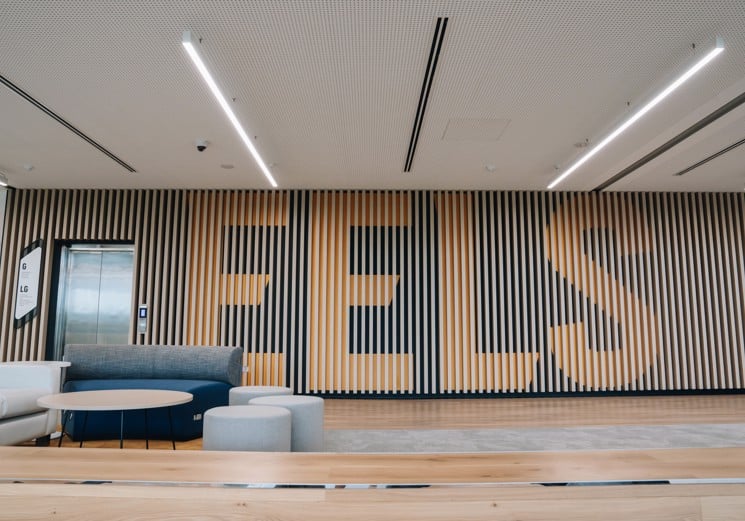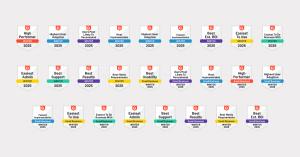A proposal is often the first real opportunity for architects and engineers to show the thinking behind their work, the people driving it, and the value they bring to the table.
So with more pressure than ever to stand out early, what really makes a proposal count?
We spoke with Lincoln Merlo, Executive Director and Engineer at erbas™ | erbas™ SUSTAIN, and member of the Blueprint Collective, about how his team is evolving their process to stay competitive and why simplicity is often the smartest strategy. Keep on reading to learn what Lincoln had to say.
What makes a proposal stand out?
Personalisation. Proposals that feel like they were written for a specific project, not just pulled from a template, always have an edge. The best proposals show a clear understanding of what the project is about, what the client needs, and how to meet those needs.
The trick is getting detailed without getting bogged down. Some clients ask for a one-pager, but most engineering projects need more space to explain the full picture. Say what matters, skip the rest.
It also helps to use language that mirrors the client’s. Look at how they describe the project in the RFP or emails and reflect that back. If they say “roof structure” instead of “roof framing,” match their terms. It shows you’re listening.
What makes a proposal easier to digest?
Structure matters. Clients don’t have time to hunt for key information, so make it easy. Start with the essentials: what you’re offering, how you’ll deliver it, and what it will cost. Use visuals, tables, and summaries to guide the reader. Save the technical deep dive for the back.
It also helps to be upfront about any potential extras. Clients appreciate honesty, so if there are common scenarios that might incur additional costs, flag them early. Transparency builds trust and sets realistic expectations.
When everything’s clear and upfront, it’s easier for the client to feel confident moving forward.
Where does the proposal really win or lose the job?
The methodology section is where everything comes together. It shows whether you’ve understood the project, the risks, and the best way to deliver value. This is your chance to lay out your plan clearly and show you’ve thought about the full lifecycle, not just design, but delivery too.
The best responses are honest about what’s involved, highlight your experience, and anticipate what the client might be worried about. You don’t need to hand over your IP, but you do need to show that you’re the right team for the job.
How do strong proposals communicate value?
By showing the depth of expertise behind the proposal. Clients aren’t just choosing a company, they’re choosing the team that will bring the project to life. A strong proposal makes that clear. Highlight the specialists who will be involved, the coordination across disciplines, and how your team works together to solve complex problems. That collaboration is part of the value.
It also helps to show how your thinking connects across services. Talk about how early decisions in one discipline affect outcomes in another. When clients see that your team understands the full picture, it builds trust and makes your offer more compelling.
What tools are helping in this process?
Spreadsheets still play a role, but tools like PandaDoc make life easier. They help with formatting, branding, and making sure every proposal looks professional. You don’t need to be a designer to create something clean and confident. A polished proposal builds trust from page one.
How do you know if your proposals are working?
Track them. Look at win rates across client types, sectors, and project sizes. That kind of data helps you focus your efforts, forecast better, and avoid surprises. It also gives you time to line up resources before you win the work, not after.
Feedback is just as important. Ask why you won or lost, even informally. Those insights often tell you more than the final result.
If you had to follow one rule when writing a proposal, what would it be?
Keep it simple. Proposals should be easy to read and quick to scan. Say what you mean, avoid jargon, and make sure the structure flows logically. If a client has to work to understand your offer, it’s already too complicated.
How are client expectations changing?
Clients are moving faster and asking for quicker turnarounds. It’s not unusual to get a request for a proposal with a tight deadline, even when all the project details aren’t fully defined. Sometimes it means they’re still shaping the scope, or they’re looking at multiple options.
It’s still worth responding, but it’s important to balance speed with clarity. Even with tight deadlines, a thoughtful response can make a strong impression.
Final Thoughts
Strong proposals tell a clear story, highlight the team behind the work, and show you understand what the client really needs. When your thinking is easy to follow and the value is obvious, trust builds naturally. From structure and tone to timing and transparency, every detail matters. The best proposals make the decision easy.
About erbas™
Proudly Australian-owned, erbas™ | erbas™ SUSTAIN deliver integrated sustainability, well-being & engineering solutions across diverse sectors, including education, residential, commercial, workplace, health, retirement living, industrial, rail, community, sports, leisure, government, and mission-critical developments.
Since 1997, our multidisciplinary team has partnered with clients to provide innovative, compliant, and functional design solutions.
Our engineering division specialises in mechanical, electrical, hydraulic, fire protection, and vertical transport systems – offering engineering consultation, design, and documentation to streamline project delivery.
At erbas™ SUSTAIN, we empower organisations to integrate sustainability and well-being into their built environments. With a unique blend of academic expertise and engineering insight, we develop evidence-based solutions that align with your strategic goals and deliver lasting impact.
Featured Project
Parramatta Eels Centre of Excellence

Developed in collaboration with the Parramatta Eels, the precinct caters to NRL, NRLW, elite junior pathways, and local clubs, uniting every level of the game within a single specialised venue. It is also Australia’s first gender-equal elite rugby league training precinct, with fully duplicated facilities for men and women across all programs.

Key facilities include:
- Five international-standard playing fields
- A boutique match venue and community centre
- Football and staff departments
- Gym, aquatic and plunge pools, sauna and recovery zones
- Meeting and boardrooms, lecture theatres
- Hall of Fame, ‘The Vault’ museum, Roll of Honour and retail entry
- Community function rooms, commercial kitchens, and a conference centre
The facility supports both grassroots participation and the Eels Elite Pathway and Eels in the Community programs — harnessing the power of sport to uplift lives across Western Sydney.

Our team delivered integrated building services engineering for this landmark project, including:
- Advanced mechanical and electrical systems
- Fire safety services tailored for elite and public use
- Hydraulic systems designed for athlete performance and community access
- ESD strategies for a future-proof, sustainable legacy
Since 2020, we’ve applied our interstate best-for-project approach in collaboration with HB Architecture, blending the elite sports and sustainability expertise of our Victorian team with our NSW team’s local infrastructure and site knowledge.

About Linc Merlo
Linc is an Executive Director at erbas™ | erbas™ SUSTAIN, leading the Victorian offices, sustainability team and core board functions. With 20 years in building services engineering and sustainability consulting, he blends vision with practicality, spotting trends, seizing opportunities, and building successful teams.
Skilled in strategy, delegation, and collaboration, Linc drives efficient execution while fostering trust and loyalty among staff, clients, and peers. His focus on talent development and strong relationships ensures repeat business and industry recognition.
A Chartered Professional Engineer, Linc is recognised locally and internationally across multiple disciplines.
The Blueprint Collective: A Community for A&E Innovators
Lincoln Merlo and this article are part of the Blueprint Collective, a free, members-only content program that highlights top architecture and engineering firms. We do all the work, you get all the credit.
Each month, we interview you for 30 minutes, then write, design, and promote custom content about your firm. You’ll get beautifully branded materials, backlinks, and social promotion, all with full approval rights. It’s free PR, real thought leadership, and zero lift on your part. Learn how to join the Blueprint Collective here.




